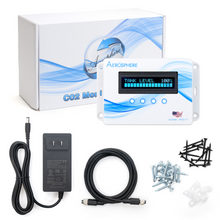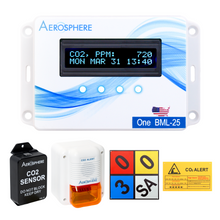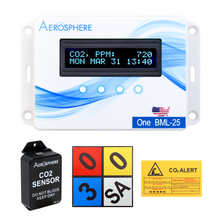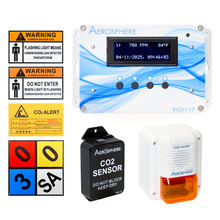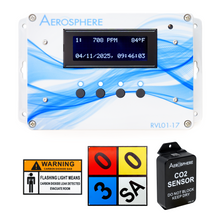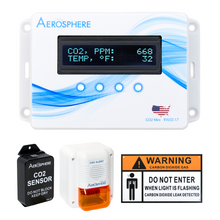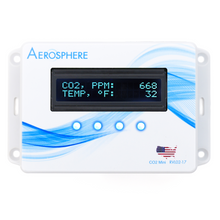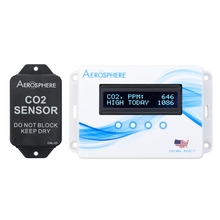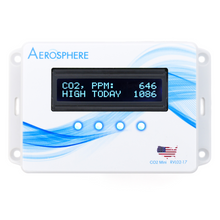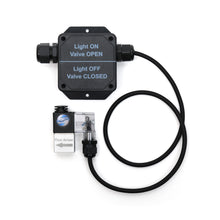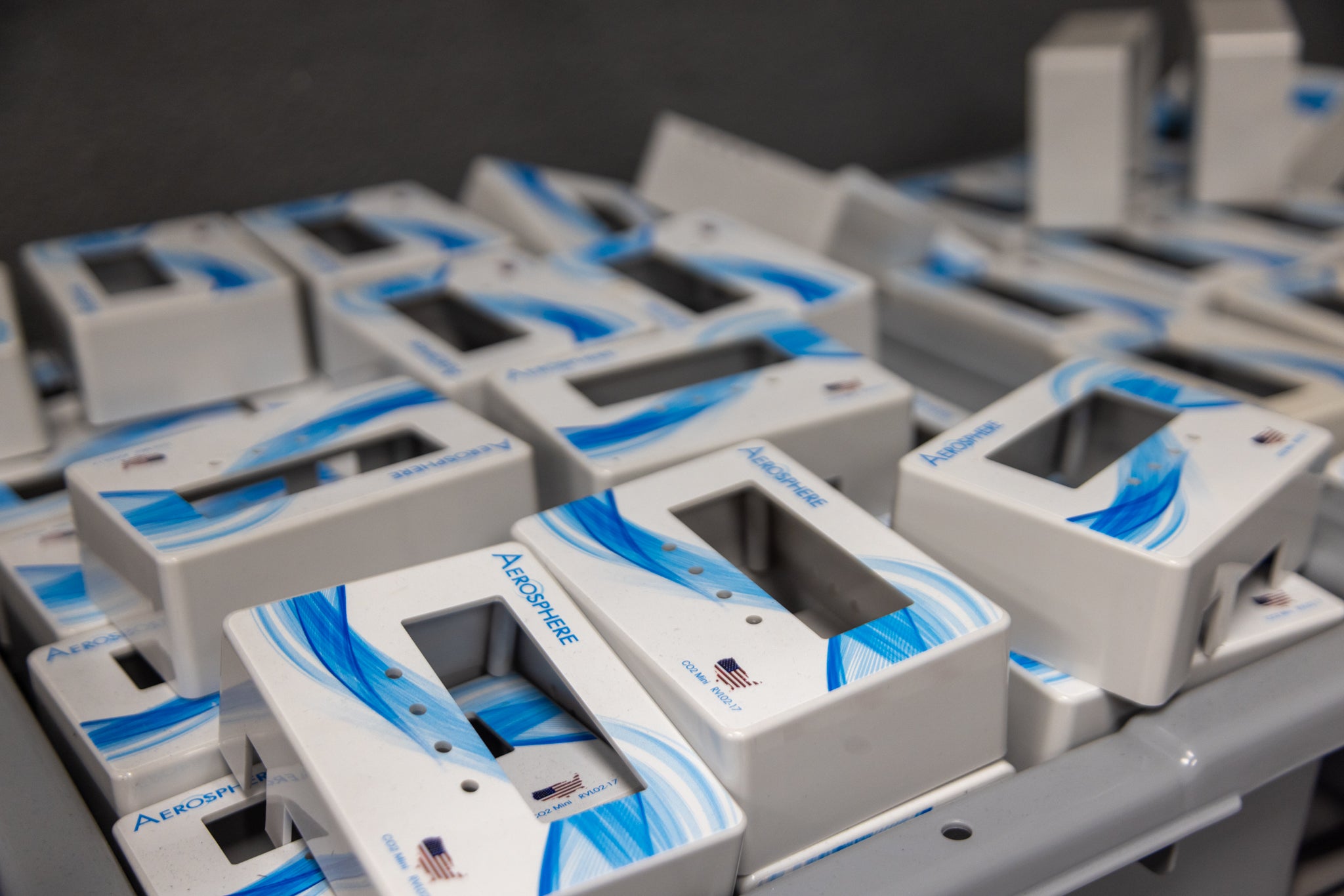What OSHA Says About CO2 Monitoring: Workplace Safety Guidelines
As workplaces strive for healthier environments, understanding how CO2 monitoring aligns with OSHA (Occupational Safety and Health Administration) compliance is essential. Elevated levels of carbon dioxide (CO2) can pose serious health risks, and OSHA plays a critical role in setting safety standards to prevent overexposure.

As workplaces strive for healthier environments, understanding how CO2 monitoring aligns with OSHA (Occupational Safety and Health Administration) regulations is crucial. Elevated levels of carbon dioxide (CO2) can pose serious health risks, and OSHA plays a vital role in establishing guidelines to ensure safety and compliance.
What is OSHA?
The Occupational Safety and Health Administration (OSHA) is an agency of the United States Department of Labor that ensures safe and healthful working conditions. It was created because of the multiple incidents injury and death rates on the job.
Understanding CO2 Risks in the Workplace
Carbon dioxide is a naturally occurring gas that humans exhale and is also produced during combustion. However, excessive levels can lead to adverse health effects. According to OSHA, In the atmosphere, CO2 normally exists at concentrations between 300 and 700 ppm. Larger gas-phase concentrations of CO2 may produce
signs and symptoms of increased respiratory rate, lassitude, sleepiness, headache, convulsions, dyspnea, sweating, dizziness, or narcosis.
OSHA has set permissible exposure limits (PEL) for various contaminants, but guidelines for CO2 specifically are less direct. However, they recommend maintaining good ventilation and monitoring air quality, emphasizing that employers must ensure that workers are safe from hazardous concentrations.
OSHA Guidelines and Recommendations
While CO2 monitoring is not explicitly mentioned in the respiratory protection standards, it plays an essential role in ensuring safe work environments in settings where CO2 concentrations may rise, such as enclosed spaces, laboratories, or industries involving the use of gases.
The current OSHA standard for Permissible Exposure Limit (PEL) is currently set at 5,000 parts per millions (PPM) as an 8-hour time-weighted average (TWA) concentration. They have also provided general guidelines that can aid in workplace safety:
- Ventilation: Ensure adequate ventilation to minimize CO2 buildup. OSHA's General Duty Clause states that employers must provide a safe work environment. When carbon dioxide is delivered in enclosed spaces or below grade locations that are not confined spaces, it is necessary to ventilate such areas adequately to levels. Therefore, the ventilation system should be design to exhaust from the lowest level and allow make-up air to enter at a higher point.
- Monitoring: Regularly test air quality using CO2 monitoring systems to detect hazardous concentrations. It's important to develop and implement a procedure to monitor the atmosphere for CO2.
- Training: Educate employees about CO2 risks and safe exposure levels to maintain vigilance.
Implementing CO2 Monitoring Solutions
To comply with OSHA's recommendations, businesses can invest in reliable CO2 monitoring solutions. At CO2 Monitoring, LLC, we offer the Aerosphere® line of products, designed for high accuracy and reliability. These systems are manufactured in Las Vegas, NV, ensuring quality and precision.
Implementing a CO2 monitoring system can help in:
- Identifying high CO2 levels swiftly and effectively.
- Ensuring compliance with safety regulations.
- Improving air quality and overall workplace morale.
Why Choose Aerosphere® for CO2 Monitoring?
Our Aerosphere® products stand out in the market because they offer:
- Real-time monitoring and alerts.
- Easy integration into existing HVAC systems.
- User-friendly interfaces for seamless operation.
Conclusion
OSHA emphasizes the importance of monitoring indoor air quality, recognizing that adequate ventilation and proactive CO2 monitoring are integral to workplace safety. While no specific CO2 PEL exists, adhering to the general guidelines can create a healthier environment.
Explore our Aerosphere® CO2 monitoring solutions to ensure your workplace is compliant with safety standards and free from hazardous CO2 levels. Prioritize health with effective air quality monitoring today!
What is OSHA?
The Occupational Safety and Health Administration (OSHA) is an agency within the U.S. Department of Labor responsible for ensuring safe and healthful working conditions. It was created in response to rising workplace injuries and fatalities, and it establishes regulatory standards for various occupational hazards.
Understanding CO2 Risks in the Workplace
Carbon dioxide (CO2) is a naturally occurring gas that humans exhale and is also produced during combustion. However, excessive levels can lead to adverse health effects. According to OSHA, In the atmosphere, CO2 normally exists at concentrations between 300 and 700 ppm. Larger gas-phase concentrations of CO2 may produce
signs and symptoms of increased respiratory rate, lassitude, sleepiness, headache, convulsions, dyspnea, sweating, dizziness, or narcosis.
OSHA has set permissible exposure limits (PEL) for various contaminants, but guidelines for CO2 specifically are less direct. However, they recommend maintaining good ventilation and monitoring air quality, emphasizing that employers must ensure that workers are safe from hazardous concentrations. Higher concentrations may lead to:
- Increased respiratory rate
- Drowsiness or fatigue
- Headaches
- Dizziness or confusion
- Sweating or shortness of breath
- Convulsions or narcosis in extreme cases
OSHA Guidelines for CO2 Exposure
Although OSHA does not have a CO2-specific regulation under its respiratory protection standard, it provides relevant guidelines under its General Duty Clause and exposure limits for airborne contaminants.
- Permissible Exposure Limit (PEL): OSHA recommends a PEL for CO2 of 5,000 ppm over an 8-hour time-weighted average (TWA).
- Ventilation: OSHA emphasizes adequate ventilation in any enclosed or below-grade location where CO2 may be present. Ventilation systems should be designed to exhaust air from low points and allow clean air in from higher elevations.
- Air Quality Monitoring: Employers are encouraged to implement air quality monitoring procedures, particularly in industries where CO2 is stored, generated, or used.
- Training: Educate employees on the risks of CO2 exposure and ensure they are familiar with safety procedures and monitoring protocols.
Why CO2 Monitoring Matters
While CO2 detectors are not explicitly required by OSHA in all cases, they are strongly recommended in environments where CO2 concentrations may rise, such as:
- Breweries and beverage facilities
- Laboratories
- Restaurants and kitchens
- Cold storage rooms
- Enclosed gas storage areas
By regularly monitoring CO2 levels, employers can proactively reduce health risks and maintain a safe workplace environment that aligns with OSHA’s general safety standards.
Implementing CO2 Monitoring Solutions
To support OSHA compliance, businesses should invest in professional CO2 monitoring systems. At CO2 Monitoring, LLC, we proudly offer the Aerosphere® line of CO2 monitoring solutions, engineered for precision, reliability, and code compliance. Each system is manufactured in Las Vegas, NV with industry-leading accuracy.
Benefits of CO2 monitoring include:
- Real-time detection of elevated CO2 levels
- Early warning alerts to prevent overexposure
- Improved workplace morale through safe air quality
- Compliance with OSHA’s safety and ventilation recommendations
Why Choose Aerosphere® for CO2 Monitoring?
Our Aerosphere® CO2 Monitoring System offers:
- Real-time alerts and remote monitoring
- Easy integration with HVAC and ventilation systems
- User-friendly interfaces for simple operation
- Configurability to meet local fire and building code requirements in all jurisdictions
Whether you're overseeing a commercial kitchen, managing a distribution center, or maintaining a laboratory, Aerosphere® provides the tools to ensure OSHA-compliant indoor air safety.
Our Complete Aerosphere® CO2 Monitoring System is versatile, and can be configured to comply with codes in all jurisdictions. By investing in CO2 monitoring technology, employers not only comply with OSHA guidelines but also demonstrate a commitment to employee health and safety. Ensuring that CO2 levels remain within safe limits is essential for fostering a productive work environment.
Conclusion
OSHA emphasizes the importance of air quality monitoring and proper ventilation in workplaces where gas exposure is possible. While no standalone CO2 regulation exists, maintaining CO2 levels below the recommended 5,000 ppm TWA and following OSHA’s General Duty Clause are essential steps toward creating a healthier, safer work environment.
Explore Aerosphere® monitoring solutions today to protect your team, improve indoor air quality, and ensure your business is OSHA-compliant. Let’s prioritize workplace health—one breath at a time.

